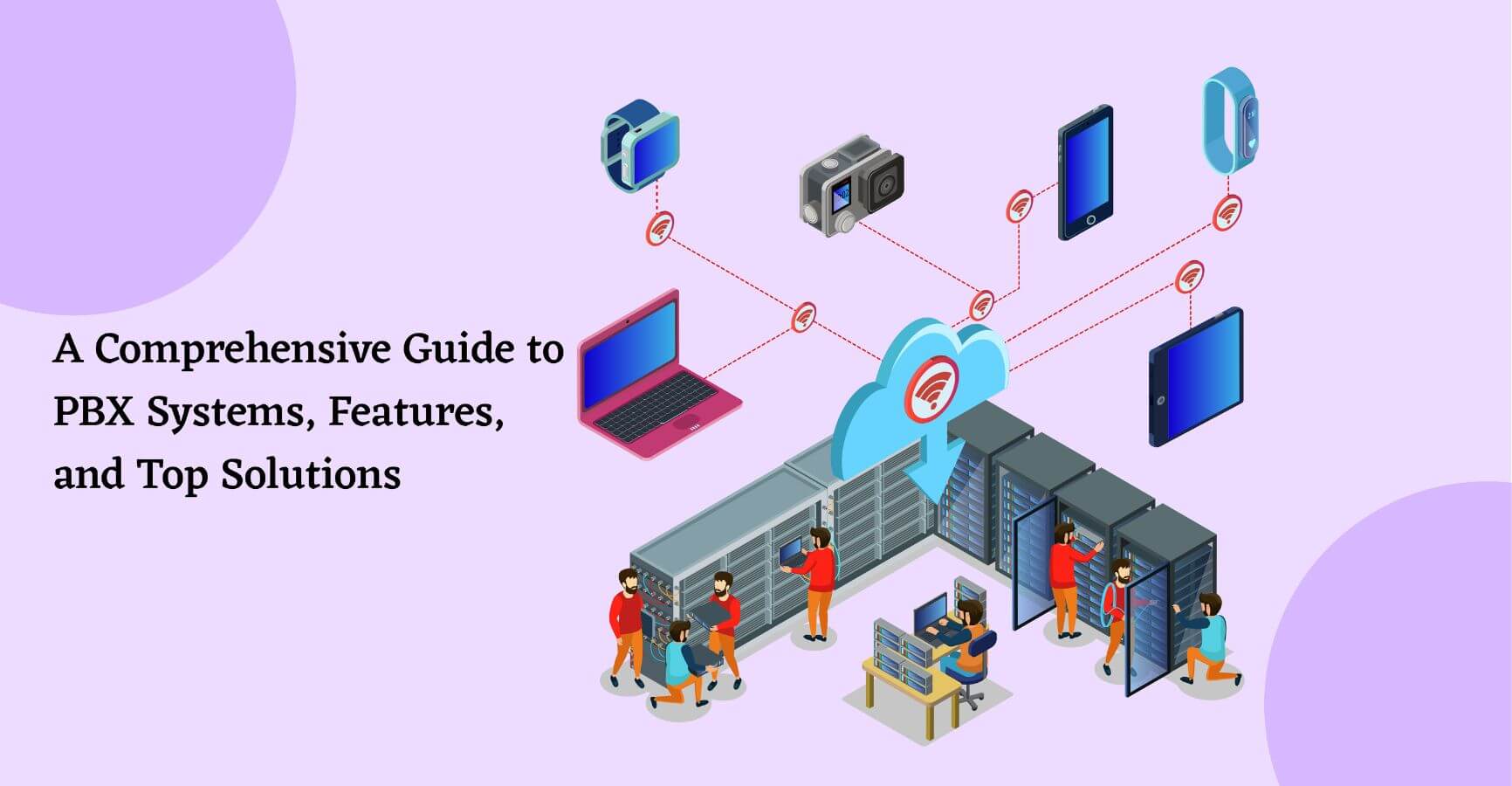In the realm of modern business communication, a PBX system (Private Branch Exchange) plays a pivotal role in connecting internal and external stakeholders seamlessly. As companies desire enhanced efficiency, the adoption of the right PBX system becomes crucial.
In this blog, dive into the fundamentals of the system, explore their features, and spotlight the best solutions available, including Cloud PBX and Hosted PBX.
Understanding Private Branch Exchange Systems
What is a PBX System?
A Private Branch Exchange (PBX) system is a private telephone network used within an organization. It enables internal communication between employees and provides a gateway for external communication with clients and partners.
The primary function of Best PBX Solutions is to route calls efficiently, handle multiple lines, and enable communication within the organization.
Best Key Features:
1) Call Routing:
PBX systems efficiently route incoming calls to the appropriate extensions, ensuring that callers reach the intended recipients swiftly.
2) Internal Communication:
Employees within an organization can communicate seamlessly through the PBX system, enhancing collaboration and productivity.
3) Voicemail:
It often includes voicemail functionality, allowing users to receive and leave messages when they are unreachable.
4) Auto-Attendant:
An auto-attendant feature greets callers with a recorded message and provides options to direct their calls to the relevant departments or extensions.
5) Conference Calling:
Many PBX systems support conference calling, enabling multiple participants to join a virtual meeting, and fostering effective collaboration.
6) Call Recording:
Call recording functionality allows businesses to maintain records for quality assurance, training, and compliance purposes.
7) Scalability:
PBX systems are scalable, making them suitable for businesses of varying sizes. They can adapt to the changing communication needs of an organization.
8) Budget Friendly:
By streamlining internal communication and optimizing call routing, PBX systems contribute to cost savings in the long run.
Uses of PBX Systems

A) Internal Communication Enhancement
It creates a centralized communication hub within an organization, enabling quick and secure internal communication. Employees can dial extensions directly, minimizing the need for external lines.
B) Efficient Call Management
With features like call routing and auto-attendant, PBX systems streamline call management. This will ensure that incoming calls are directed to the right department or individual, reducing the risk of missed opportunities or client dissatisfaction.
C) Virtual Collaboration
PBX systems with conference calling capabilities enable virtual collaboration. Team members can connect from different locations, fostering teamwork and enhancing overall productivity.
D) Customer Interaction
For businesses that often interact with clients, the system ensures that customer calls are handled professionally and directed to suitable representatives. This contributes to a positive customer experience.
How to configure?
A) Gather information about your organization’s communication needs before configuring, including the number of extensions required, the type of phones or devices being used, and any desired features like voicemail or call forwarding.
B) Install the in-hardware and connect it to your network before accessing its configuration interface. Follow the provider’s guidelines for accessing this interface, which may involve logging into a web-based console or dedicated management tool.
C) Configure basic system settings such as the date and time, language preferences, and network settings within the configuration interface. Connect the PBX to your organization’s network.
D) Create extensions for each user or device connected to the system and assign unique extension numbers. Customize individual user settings like voicemail, call waiting, and other features according to your organization’s needs.
E) Decide how incoming and outgoing calls will be routed by defining inbound and outbound routes. These routes dictate how calls to specific numbers or extensions are handled. Define both inbound and outbound routes accordingly.
F) Implement VOIP configuration if available, including creating personalized voicemail messages and specifying how calls should be handled when users are away or not available.
G) Securing by enabling access controls, setting strong passwords, and encrypting sensitive data when possible. Update passwords regularly to maintain security.
H) Activate add-on features like call forwarding, call recording, and conference calling if they aren’t already enabled. Tailor these features to meet your business needs.
I) Test the entire configuration after making adjustments to ensure everything works correctly. Check call quality, voicemail functioning, and other key aspects of the setup. Address problems encountered during the testing stage.
J) Backup your PBX configuration frequently to avoid losing critical data due to technical malfunctions or updates. Restore the system promptly if something goes wrong.
K) Store detailed documentation regarding the configuration settings, including extension numbers, login credentials, and routing rules. Refer to this material whenever questions occur.
L) Offer training sessions for employees who will utilize the new PBX system, educating them on functions like voice mailboxes, call forwarding, and other capabilities appropriate to their job tasks.
Exploring the Cloud Solutions
What is Cloud PBX?
Cloud PBX, or hosted PBX, is a virtual phone system that operates over the internet. Instead of relying on traditional hardware, Cloud PBX leverages cloud technology to manage calls, messages, and other communication features.
Benefits of Cloud PBX
A) Flexibility:
It offers flexibility, allowing businesses to scale their communication infrastructure based on their needs.
B) Cost-Effective:
With no need for expansive hardware installations, these solutions are cost-effective, making them suitable for small and medium-sized enterprises.
C) Remote Accessibility:
Team members can access systems remotely, promoting flexible work arrangements and ensuring uninterrupted communication.
D) Automatic Updates:
Cloud providers often handle system updates and maintenance, ensuring that businesses always have access to the latest features and security measures.
Hosted PBX Solutions
It’s a service where a third-party provider manages and hosts the system off-site. This eliminates the need for businesses to invest in and maintain physical PBX hardware on their premises.
Advantages of Hosted PBX Solutions
A) Reliability: It often has redundant systems and backup measures, ensuring reliable and uninterrupted communication.
B) Professional Support: Businesses using this solution gain access to professional support from the service provider, reducing the burden on internal IT teams.
Conclusion:
In the dynamic landscape of business communication, selecting the right PBX solution is a critical decision. Whether opting for the flexibility of Cloud PBX or the convenience of Hosted PBX, businesses should assess their specific needs and long-term goals. By embracing the features and advantages of modern PBX systems, organizations can foster efficient internal communication, enhance customer interactions, and contribute to overall business success.
READ MORE:- Why is cloud telephony-based call centre software better than a PBX solution


